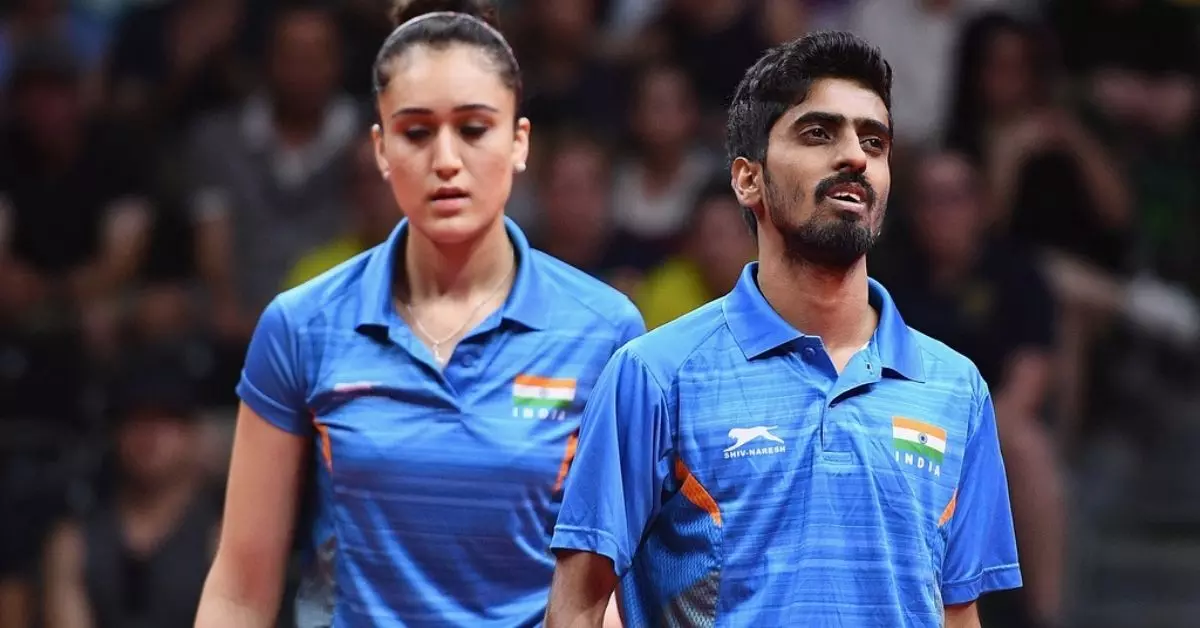Table Tennis
What are the rules of table tennis at the Olympics?
Discover how the highly reflex sport of table tennis emerged from ping-pong and all the rules to play it at the Olympics

Sathiyan Gnanasekaran and Manika Batra
Table tennis in India has seen an active surge over the past two decades with the likes of Sharath Kamal, Poulomi Ghatak, Sathiyan Gnanasekaran, Harmeet Desai, and Manika Batra steering the ship to success.
Quietly making a name for itself, table tennis has gained quite the cult following in India, making its way into the schools and colleges of the country. A steady brood of quality players has been produced ever since as people began to take a liking to this blink-and-you-miss variety of fast-paced racquet sport.
Conquering the international circuit often and making headlines, the Indian table tennis players have played a crucial role in enlarging the popularity of the sport in this cricket-loving nation. In fact, India's impressive outing at the 2018 Commonwealth Games where they picked up a mind-boggling 8 medals - 3 gold, 2 silver, and 3 bronze, was telling of the future success of this outfit of paddlers.
Accordingly, four Indian table tennis stars - Sathiyan Gnanasekaran, Sharath Kamal, Manika Batra and Sutirtha Mukherjee have booked their berth for the upcoming Tokyo Olympics. As they gear up to play in the quadrennial Games in the quest of a maiden Olympic medal, let's take a closer look at this incredibly reflex-dependent sport of table tennis.
The origin story of table tennis
Tracing its roots back to the prim-and-proper, morally-charged Victorian Age, table tennis was usually played at leisure by the English upper class. More popular as ping-pong back in the day, the sport was rechristened in 1922 as table tennis. Originally dominated by the Europeans - specifically, the Hungarians, table tennis made its way into the Asian continent mainly due to colonial expansion during the mid-20th century.
It's curious how the Asians share a strong affinity towards racquet sports - chiefly, badminton and table tennis and have established an unquestionable stronghold over it. Some 8 years after China, the current domineering figure in the sport, having won a record 53 Olympic medals, hosted the first World Cup, table tennis was inducted into the Games at the 1988 Seoul Summer Olympics.
Table tennis at the Olympics
There are two broad categories under which table tennis is played at the Olympic Games - team events and singles events. While the team events conform to the best-of-five games policy, the singles events are more demanding and see a best-of-seven affair being played out.
When it comes to the Olympics, China has dominated table tennis in and out, having bagged 53 medals, 28 of which are gold. Shaped by legends like Wang Nan, Deng Yaping, Zhang Yining, Ma Lin, Ma Long, the Chinese paddlers have done their National Sport proud on the Olympic stage and how! Following behind China, with a great margin separating them, comes South Korea with 28 medals to their credit. Despite being a consistent participant in the Olympics, Indian paddlers are yet to draw first blood at the Games and desperately lack a medal at this great grand stage.
What are the rules involved in table tennis?
As with any other sport, table tennis, too, begins with an all-familiar coin toss. The winner of the toss gets to decide who will set the ball rolling first by serving or receiving as well as which side of the table they will occupy in the opening game.
Taking place on a hard table with a net demarcating it into two halves, the matches can feature either two or four players at a time. The lone strategy of the sport is to serve or strike the light-weighted ping-pong ball in a manner that the opponent misses. Employing a variety of trademark shots - the block, the chop, the topspin, players engage in nimble net-play, often producing power-packed deceptive shots.
In singles, the opponent will get a point whenever the player on the other side of the net misses. Usually played out over best-of-seven games, each player is required to score a minimum of 11 points to secure the game. Players are allowed to serve twice before a changeover takes place and the first to get to 11, wins it. In the case where the scoreboard reads 10-10, players are required to obtain a two-point lead to clinch the game.
The rules for doubles can be slightly complicated especially to those pertaining to the service. In doubles, partners are required to alternate serve mandatorily. Played out in a best-of-five affair, the doubles action can be intense and mind-boggling to witness and keep pace with.

